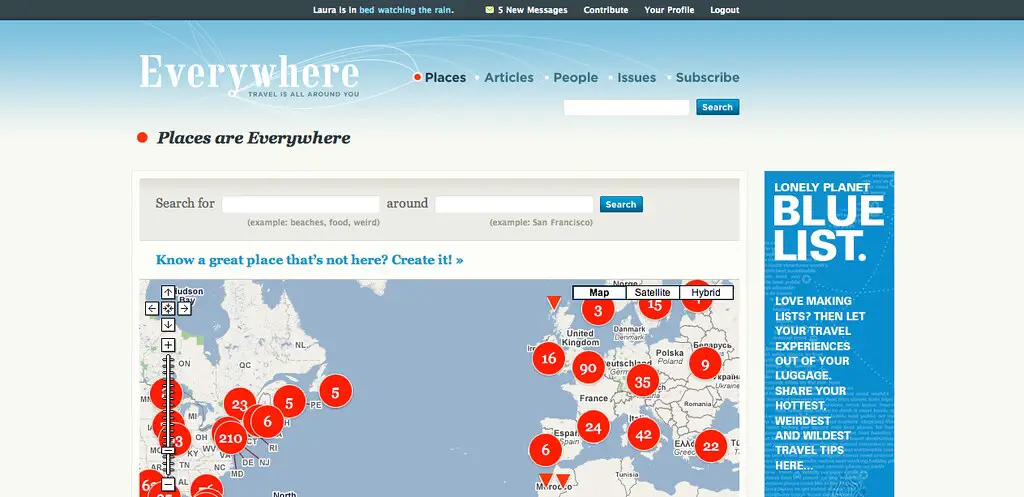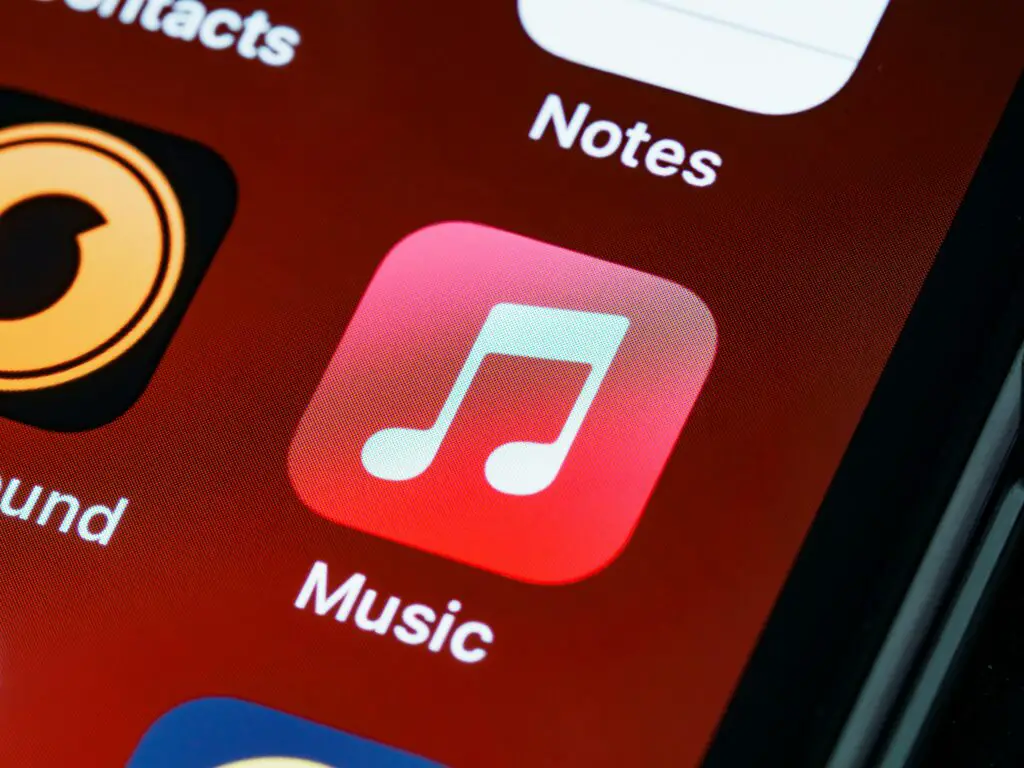Once upon a time, the internet felt like a magical, chaotic place. You stumbled across weird corners of YouTube, your Spotify playlists were lovingly handcrafted, and Instagram showed you what your actual friends were doing—not just influencers selling protein powder. But then algorithms took over, deciding what we see, when we see it, and how often. Now, things that once felt personal, fun, and even a little unpredictable are being filtered, sorted, and optimized to death.
1. Browsing Real Estate Listings

Looking for a new place used to be about finding hidden gems, either by walking the neighborhood or casually scrolling through listings. But now, as noted by Zillow, the platform’s algorithms surface listings based on user behavior, pricing trends, and predicted popularity—which often means everyone sees the same homes, and prices skyrocket faster. The element of surprise is mostly gone. Plus, sellers can game the algorithm with strategic pricing and relisting tricks.
Even if you sort by “newest,” you’re still at the mercy of what the algorithm thinks you want. Maybe you wanted a quirky fixer-upper with potential, but Zillow’s AI keeps showing you cookie-cutter condos. The thrill of discovery gets lost when every search feels like déjà vu. What used to be a treasure hunt is now more like online dating—swipe, click, disappointment.
2. Watching YouTube

YouTube used to be the Wild West—random vlogs, low-budget comedy sketches, and conspiracy theories about Avril Lavigne being replaced by a clone. But now, its recommendation algorithm, driven by watch time and engagement metrics, has fundamentally changed the platform, according to Forbes. Creators are incentivized to produce content that triggers high engagement—often through sensationalism or clickbait. That’s why your homepage is littered with reaction videos, outrage culture, and endless MrBeast thumbnails.
The algorithm prioritizes content it thinks you’ll keep watching, but that doesn’t mean it’s the most creative or diverse stuff out there. It’s harder to discover smaller channels because the system rewards familiarity and virality. As a result, you’re stuck in a loop of similar content, making YouTube feel stale and repetitive. Gone are the days when a midnight scroll led you to a guy reviewing medieval tools in his garage.
3. Shopping Online

There was a time when online shopping was a magical rabbit hole of niche brands and cool indie finds. But now, as Forbes reports, e-commerce sites heavily rely on recommendation engines, pushing products based on your clicks, carts, and even time spent looking at an item. These algorithms reinforce what you’ve already browsed rather than introducing you to anything truly new. The spontaneity is gone.
Ever notice how once you look at one pair of shoes, your entire feed becomes 100 versions of that same pair? The algorithm assumes your interests are one-dimensional. Discovery is now curated for maximum profit, not joy. It turns retail therapy into a targeted sales funnel.
4. Dating Apps

Swiping through dating apps used to feel like a chaotic but hopeful buffet of possibility. But today, platforms like Tinder and Hinge rely on algorithmic matching systems that rank users based on desirability metrics, time spent on profiles, and response rates, according to Wired. That means you’re not just looking for someone—you’re also being judged silently in the background. And if you’re not “ranked” high enough, your matches will likely suffer.
Algorithms create echo chambers where you’re only shown people similar to your past likes. It can reinforce biases and shrink your dating pool without you realizing it. Plus, many apps now prioritize people who pay for “boosts,” so love has a literal price tag. What used to be organic connections now feels like playing a rigged game.
5. Booking Travel

Remember the days of spontaneously scoring a last-minute flight deal? Airlines and booking sites now use dynamic pricing algorithms that track user behavior, demand spikes, and even location to adjust prices in real-time. Sometimes, the cost of a flight changes within minutes. If you’ve ever opened a flight search in incognito mode to avoid price hikes, you know the pain.
These algorithms have made pricing feel less transparent and more predatory. It’s hard to know if you’re getting a good deal or being gamed. The spontaneity of travel planning gets lost when you spend hours trying to outsmart a robot. It’s less “Where should we go?” and more “What’s the algorithm willing to give us?”
6. Reading the News

There was a time when the news felt like a broad overview of the world. Now, what you see is shaped by algorithmic filters that serve you stories based on your clicks, location, and political leanings. This creates personalized echo chambers that reinforce what you already believe. It’s less about being informed and more about being comforted.
Algorithms prioritize engagement, not depth or nuance. That viral outrage headline? It’s there because it keeps you on the platform. You might miss crucial stories simply because they don’t align with your past interests. The fun (and value) of stumbling onto a topic you never would’ve read is lost.
7. Playing Video Games

Many modern games now tailor difficulty and in-game experiences using algorithms that respond to your skill level and behavior. That can be cool—but it also removes the satisfaction of mastering a level on your own. It’s hard to tell if you’re improving or if the game is just adjusting behind the scenes. The challenge feels less authentic.
Also, matchmaking in multiplayer games often uses hidden ranking systems. These can pair you unfairly or manipulate how long you stay in a session. Some even tweak rewards to keep you playing just a little longer. What used to be an escape can start to feel like behavioral science.
8. Social Media

Social media once felt like a real-time feed of your friends’ lives. Now, algorithmic timelines prioritize content based on predicted engagement—not chronology or authenticity. Posts from close friends get buried beneath viral memes and branded content. You’re not seeing what you chose to follow, but what platforms think will keep you scrolling.
The worst part? It rewards outrage and oversharing. Subtle updates or small joys often go unseen unless they’re performative. Engagement metrics shape what we post and how we interact. That kind of gamification takes the fun out of being social.
9. Job Hunting

Applying for jobs used to involve researching companies and writing personalized cover letters. Now, Applicant Tracking Systems (ATS) use keyword algorithms to filter resumes—often before a human even sees them. If your wording doesn’t match what the robot expects, you’re out. It’s frustrating and opaque.
Even job boards rank postings and candidates using behavioral data. So you’re shown roles that resemble your past jobs, not the ones you’re aiming for. Algorithms can reinforce career stagnation. The human element—like passion or potential—is hard to quantify, and thus, easy to overlook.
10. Listening to Music

Back in the day, discovering music meant hearing something unexpected on the radio or trading burned CDs with friends. Now, streaming platforms serve you “For You” playlists that are eerily similar to what you already like. These recommendations are based on listening habits and track metadata, which means true surprises are rare. You’re stuck in a sonic bubble.
Sure, it’s convenient—but it also narrows your taste. When was the last time you found a song that blew your mind because it didn’t fit your usual vibe? Algorithms mean well, but they kill the randomness that used to define musical joy. Sometimes you want a wild card, not another clone of your top song.
11. Watching Movies

Remember the thrill of wandering through a video store and picking something purely based on the cover? Today, streaming services like Netflix use complex recommendation algorithms to guide what you see—often prioritizing content they want to promote. They even edit thumbnails based on what they think will catch your eye. The result? Everyone’s homepage is different, and yet somehow still boring.
You’ll rarely stumble on a hidden gem without intentionally digging. And since they push what’s popular or what aligns with your previous viewing history, it’s easy to get stuck in genre ruts. What could be a cinematic adventure turns into passive scrolling. Sometimes it feels like the movie chose you, not the other way around.
12. Book Recommendations

BookTok and Goodreads used to be places to gush over niche reads and hidden gems. But algorithms now boost titles with the most engagement, leading to a feedback loop of the same five books on every list. Popularity begets visibility, which begets more popularity. That means lesser-known authors and experimental genres struggle to surface.
It’s a shame, because readers are curious by nature. But when the algorithm keeps pushing the latest spicy fantasy romance or celebrity memoir, it’s hard to break out. Recommendations feel less like a friend saying “you’ve gotta read this” and more like a billboard screaming “everyone else is reading this—why aren’t you?” The joy of the unexpected is gone.
13. Recipe Blogs

Back in the day, you could search for a brownie recipe and immediately find ten delightful options from passionate home bakers. Now, recipe blogs are keyword-stuffed battlegrounds for Google’s algorithm. The result? Scrolling through 18 paragraphs of SEO-optimized filler before you get to the actual recipe.
Food bloggers aren’t to blame—they’re just trying to survive in an algorithm-driven world. But it’s made the process of finding new meals tedious. Instead of joyfully browsing, you’re fighting through ads and autoplay videos to get a list of ingredients. Cooking should be a creative escape, not a data mine.
